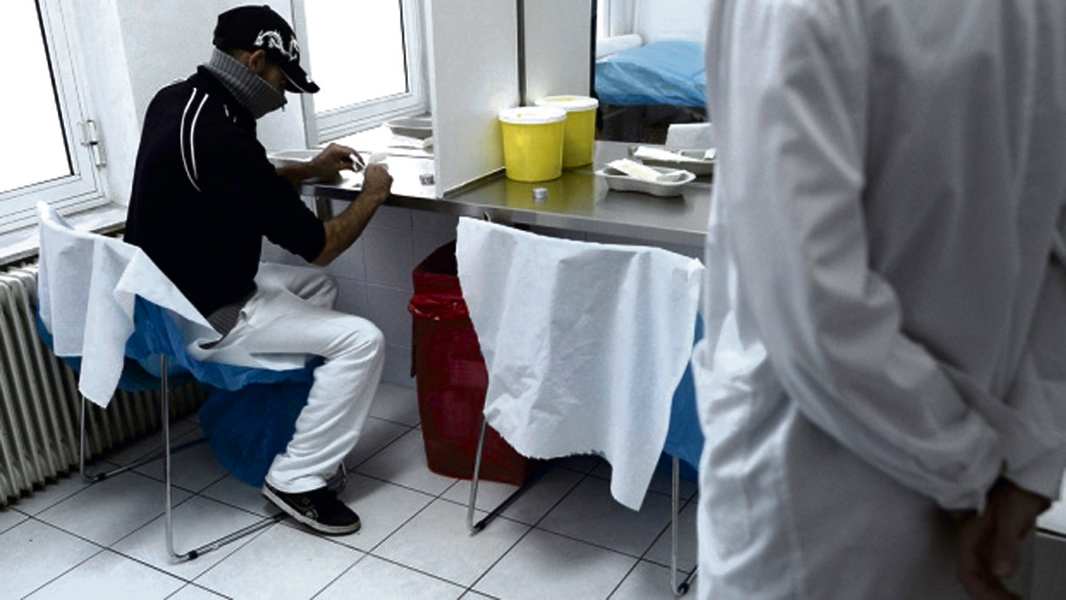
Why Australia needs more Drug Consumption Rooms

BY ALEX WODAK
Dr Alex Wodak is the President of the Australian Drug Law Reform Foundation.
Drug Consumption Rooms (DCR) are special centres where people can inject or inhale street drugs with a much lower risk of health problems than if they consumed these drugs in alley ways, parks or supermarkets; all without breaking the law.
They are looked after by trained staff in a supportive and non-judgmental environment. DCRs reduce death and injury caused by drug overdose, and they reduce the number of ambulance call-outs and the spread of of HIV and hepatitis C. They also reduce the prevalence of public injecting and the problem of discarded needles in the neighbourhood, while increasing referrals to health and social services (including detoxification and drug treatment).
These days DCRs accommodate people who want to inject their drugs, as well as those who want to inhale drugs (such as ice, crack and heroin). DCRs do as much for residents and businesses in the area around them as they do for the people using drugs.
DCRs usually attract very isolated people with serious physical and mental health problems, severe social and economic disadvantage and virtually no contact with health or social services; many have long lost contact with their families.
The first official supervised injecting centre was opened in Berne, Switzerland in 1986. Since then there are now almost 100 such centres in a dozen countries around the world; most located in Europe. In the last few years, many countries and cities have announced plans to establish new DCRs while many more centres are being considered. Germany has nearly 30 DCRs, most with inhalation as well as injection rooms.
Although some commentators claim that DCRs send the wrong message, there is no evidence this. If anything, DCRs suggest that drug use is so dangerous, it should only happen inside special centres where highly trained health workers can save a life and facilitate treatment and social assistance.
DCRs help people improve their lives by using these facilities. In some DCRs people are free to take a shower, wash their hair, wash and dry their clothes, buy some cheap and nutritious food, talk to a counsellor, see a health care worker, attend a doctor’s appointment, and get supervised training for entry level jobs. DCRs engage with people using drugs and build their trust. When people using the centre feel that they can trust the staff, they are more likely to accept a referral for drug treatment or primary health care, making engagement critical.
In European cities such as Berlin and Frankfurt, the local police and the DCRs have been working very closely for years. The Kings Cross police were, and still are, very strong advocates for the Kings Cross Medically Supervised Injecting Centre (MSIC).
The MSIC, Australia’s only DCR, was opened in Kings Cross in 2001. It has been evaluated about a dozen times. Each evaluation has been very positive, and none of these found any serious negative impacts. Yet a decade and a half later, the Kings Cross MSIC is still the only DCR in the country.
The overwhelming majority of local residents and businesses in Kings Cross strongly support the MSIC, as this centre has reduced public injecting and improved neighbourhood amenity. DCRs should only be opened in areas where there is a large drug market and the local community is strongly in favour.
Australia has tried being tough on drugs, waging numerous drug crackdowns for more than half a century. Governments have focused on law enforcement, generously funded customs, police, courts and prisons, demonised people who use drugs and frugally funded health and social services for them. The result has been a bad problem becoming much worse, and at a great cost. In the last half–century, the drug market has grown and become much more dangerous while deaths, disease, crime, corruption and violence are all much greater than they used to be.
DCRs around the world have staff specially trained to deal with difficult situations including violence – but violence is uncommon in DCRs because staff make the clients feel safe and secure. This is the same for treatment centres where people are regularly coming off substances like ice. DCRs are designed to make the communities they are situated in safer. They also reduce the burden on police and Emergency Departments.
As inhaling ice has increased in Australia, we should start opening DCRs in our major cities and design them to be able to accommodate people who inhale as well as inject drugs. Inhalation of drugs in a DCR requires installing powerful ventilation systems to meet occupational and health standards for the staff. Although many of the people attending the MSIC in Kings Cross inject ice, violence is uncommon.
There are many reasons for opening more DCRs in Australia. We should remember that DCRs help get drug users into treatment and care and reduce the spread of HIV and hepatitis. They also help residents and businesses in neighbourhoods struggling with large drug markets. The most important question we should ask ourselves is not whether we need another DCR in Australia, but why only one such centre has been established in the country despite their very positive national and international record.









